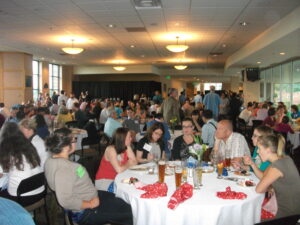As previous installments of our blog video series have indicated, the production team for Planning to Turn the Tide spent a great deal of time in June and July first in Florida, then on a two-week road trip to Colorado and Iowa from Chicago to capture additional content.
Click here to see the short video taped at the Omni Interlocken Hotel and Resort in Broomfield, Colorado.
From July 9-12, we attended and filmed at the Natural Hazards Workshop, held at the Omni, completing eleven interviews with leading planners and hazards experts:
- Michelle Meyer, Texas A&M University
- Siyu Yu, Texas A&M University
- Andrew Rumbach, Urban Institute
- Anne Miller, Colorado Resiliency Office
- Susan Cutter, University of South Carolina
- Gavin Smith, North Carolina State University
- Eric Letvin, Federal Emergency Management Agency
- Karl Kim, University of Hawaii
- Lisa Ritchie, Town of Erie (CO)
- Patty Hernandez, Headwaters Economics
- Don Elliott, Clarion Associates
This range of expertise became available to us largely because of the enthusiastic support of the Natural Hazards Center, part of the University of Colorado, and its executive director, Lori Peek, who arranged meeting room space where we could set up equipment, and to which we could direct those willing to be interviewed for the film. In addition, I was able to scout plenary and breakout sessions for promising speakers, some of whom are on the list above, to supplement those I contacted ahead of time.

Natural Hazards Workshop Barbecue on closing night, University of Colorado Stadium (Folsom Field), July 2013
It may be obvious, at least to those experienced in such productions, that a one-hour documentary can use only a small fraction of the recordings we have gathered to date, but the beauty lies in our ability to identify those segments that will best help tell the larger story and illuminate the issues involved in planning for resilient communities in the face of natural disasters and climate change. Each of these highly trained and knowledgeable individuals gave us new perspectives and ideas to think about as we develop our film. The end product will be richer for it. But it is also likely that we will find other ways to use some of the material that does not make it into the initial film efforts, in part because the APA Hazard Mitigation and Disaster Recovery Planning Division, which is sponsoring and supporting the project, has other avenues for offering public and professional education on hazards.
And who is to say that, as time goes on, and with additional resources, this is our one and only film? If you wish to support our efforts, please use the QR code below to make a secure donation.
Jim Schwab

Trackbacks/Pingbacks